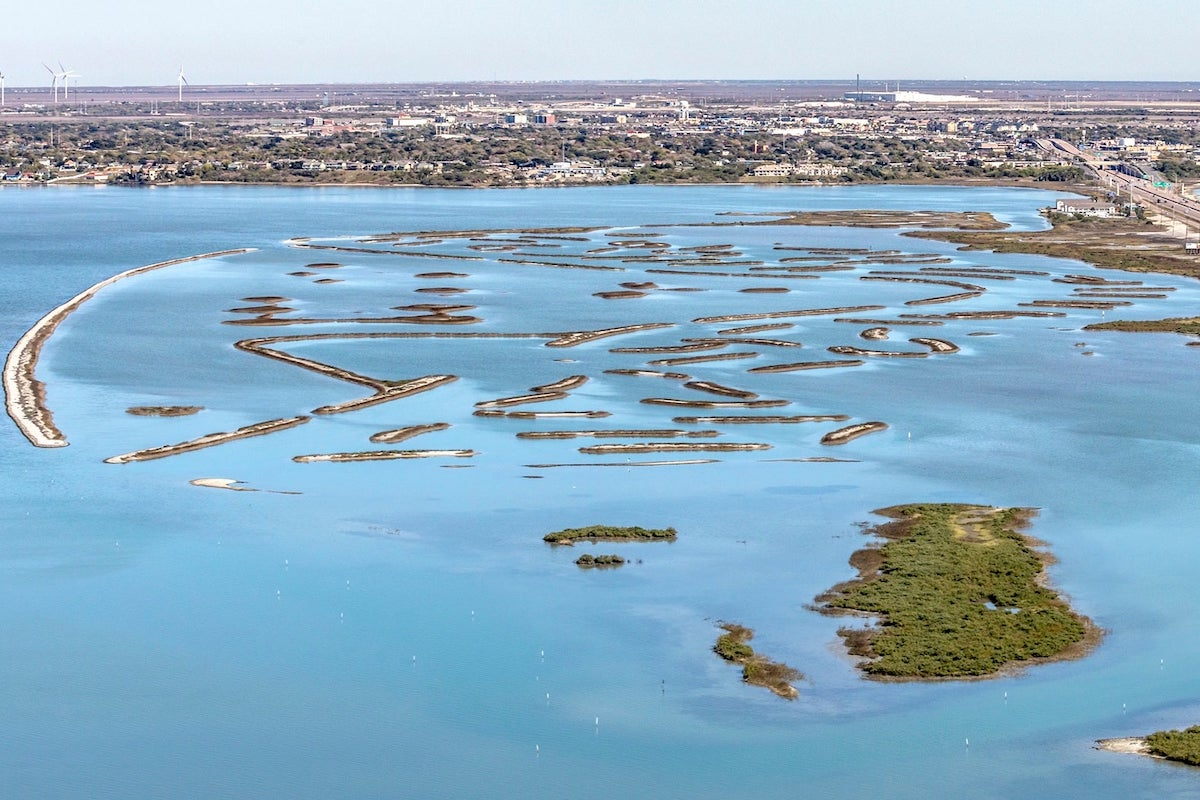“The Lake McQueeney and Lake Placid residents are heavily involved and invested in the work Sundt is doing to revitalize their community lakes,” Transportation Group Project Director Kevin Graf said. “The project team meets with them and GBRA on a monthly basis to provide updates and maintain the positive relationship we have with the community. We’re excited to give the residents their lakes back.”
Since the project is upgrading existing dams, special equipment and technology is used so that the team is able to work on the water. Before any major work could be done, each site had to have a temporary work bridge built where the team drove pipe pile to set steel beams and wood decking to support cranes out on the water. With these temporary work bridges in place, the team can then construct sheet pile cofferdams around the site that will dry everything up and keep the water at bay, allowing the team to dig into the real work. Once the water is gone, the project team can remove the old gates and add concrete to the foundation and piers to accommodate the new hydraulically actuated gates.
Off the water, Sundt is upgrading the dam embankment with armoring. The team will install a gravel drainage system on the existing embankments and then cover it with 8-inch concrete slope paving to provide stability.
“Our crew’s ability to learn fast and apply that knowledge to increase our efficiency has been amazing," Graf said. "Our first span on the bridge at Lake Placid took about two weeks to build, but by the time we were finishing the bridge at Placid, we were finishing a span in only three days."

| Your local Link Belt dealer |
|---|
| Nueces Power Equipment |
| Central Texas Equipment |
In addition to the work being done over water, there is also a lot of work going on underwater. Field Superintendent John Canales is an experienced piledriver heading up the delicate and challenging task of driving pile in the precise locations in the shale formations at the bottom of the lake. Sundt is also working with subcontractors with divers who perform specialty work like underwater jackhammering to break up the old concrete as well as cutting, torching, and welding to help seal up the sheet pile cofferdams.
“Working with limited visibility, not knowing what’s going on underwater has been a challenge for sure,” Project Manager Clinton Witherell said. “But through planning, adapting, and reallocating resources, we haven’t let it impact our progress.”
The team was able to figure out how to drive pipe piles for the temporary work bridges by live shooting with the help of the survey crew and total station. Typically, driving these 30-inch piles would require the construction of a template for the pile driver to go between, which adds a significant amount of work, material, and time. With the careful surveying and plotting of the survey team and total station, they were able to drive the pipe piles much more quickly but just as accurately. They have used Sundt’s SPARK Board as a resource for inspiration, as well as a place to share the solutions they have generated as a team.
“The Sundt SPARK Board has been an amazing resource to tap into all the construction innovations that employee-owners across the country have developed on their own projects,” Project Engineer Halen Hartley said. “We’ve been able to come up with some pretty good ideas like using the vibro hammer to break up the concrete and rigging pontoon boats to use in lieu of the much more expensive and difficult to procure pile driving barges. It’s been really cool and rewarding being able to work together with the rest of the team to come up with these creative solutions that save our team and the client time and money.”








































































